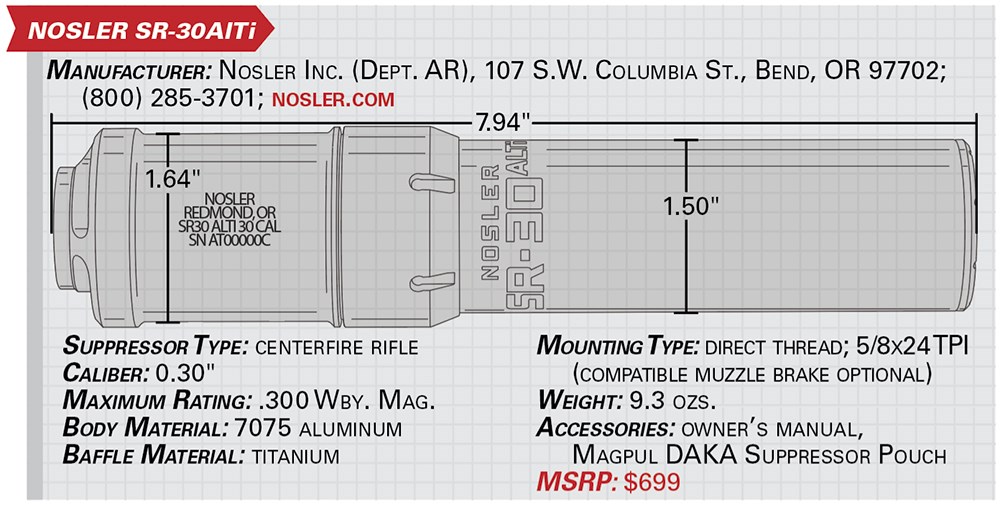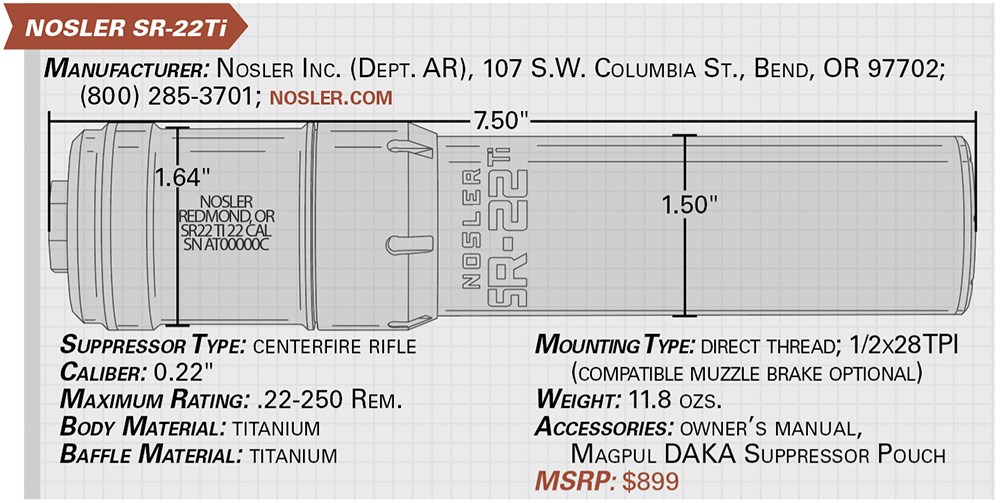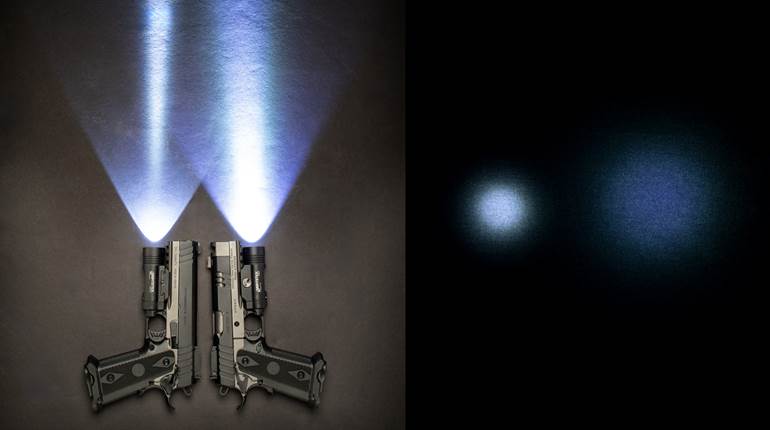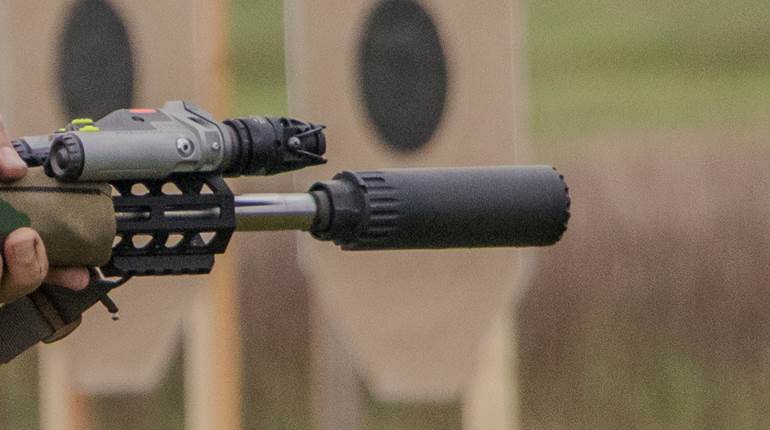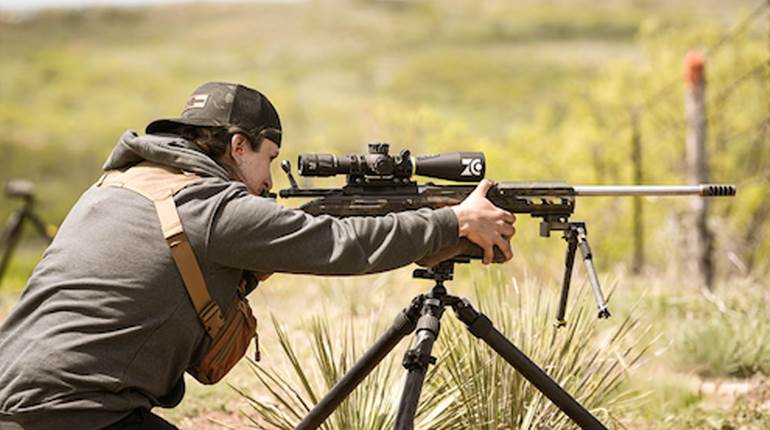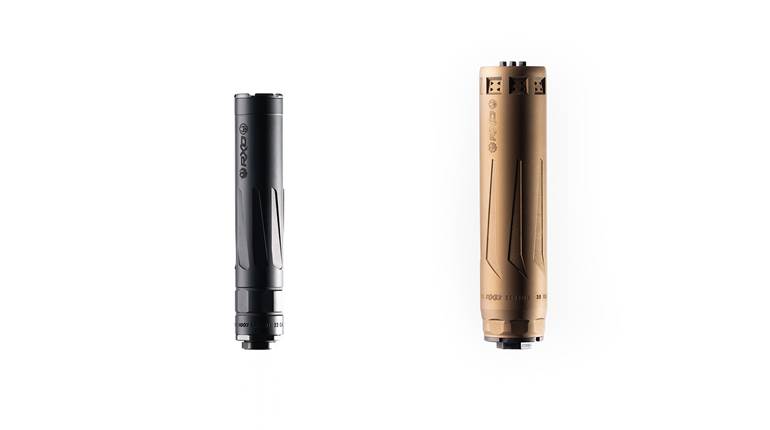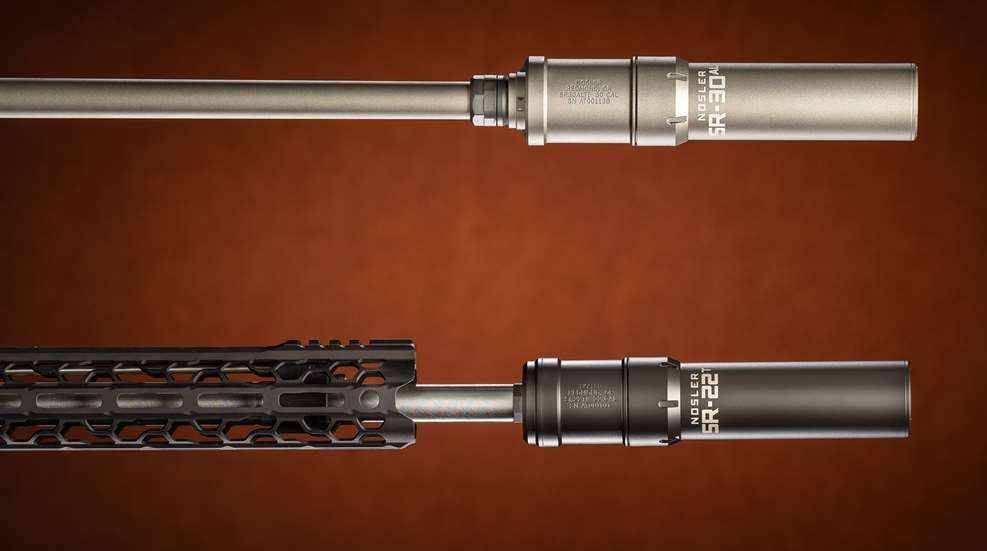
Americans are a particularly self-reliant lot, so it only follows that hunting would be ingrained within our national psyche to a degree that few other countries can even come close to matching. And like many millions across this exceptional nation of ours, the Nosler family of Bend, Ore., shares this deep-seated appreciation for the great outdoors and an inborn love of the hunt. But unlike most of their fellow outdoorsmen, so great was their passion for hunting better—more efficiently, effectively and ethically—that they decided to do something about it, and helping others find similar success in the field has been the family business for nearly 75 years now.
This mission started in 1946 when John Nosler set himself to the task of designing a better performing big-game-hunting bullet after it took seven well-placed shots from his .300 H&H to finally drop the beast during a hugely disappointing Canadian moose hunt. The resulting Partition projectile not only launched the Nosler Partition Bullet Co. in 1948 (with the firm expanding into loaded ammunition manufacturing in 2004), but the marked improvement in bullet performance that the design represented left such an indelible mark on the ammunition industry that John Nosler was NRA Publications’ unanimous choice for its inaugural Golden Bullseye Pioneer Award.
Then, after several decades of building high-quality test barrels and complete guns to be used in the development and field testing of its ammunition products, Nosler would capitalize on that experience to jump into the hunting-rifle market in 2005 with the introduction of the Nosler Custom Rifle—even undertaking the extra legwork of creating its own action in the process. The first of numerous iterations of the Model 48 (the Custom Sporter) would follow in 2006, and Nosler’s most recent bolt-action design, the Model 21, came out just last year. Looking back over the years at the various reviews of Nosler rifles that have run in this magazine, without exception, they have been superb shooters, offering excellent performance, usually in an especially handy, lightweight package—a combination that we’ll see more of later.
Currently in its third generation of family ownership (John’s grandson, another John, is now at the helm) and having already applied its fine engineering and precision manufacturing know-how to optimizing both the hunter’s gun and his ammunition, Nosler is now turning its attention toward that noblest and most beneficial of firearm accessories—the suppressor. Introduced at SHOT Show 2022, Nosler’s silencer line (yes, I will be using both terms interchangeably, as each has a claim to legitimacy) currently stands at four models—the .22-cal. SR-22Ti and SR-22AlTi and the .30-cal. SR-30Ti and SR-30AlTi—and is being produced in-house at the company’s Redmond, Ore., facility.

Structurally, the Ti and the AlTi models are essentially identical (there are a few very slight differences in the contours of their mounts); they really differ only in the materials used in their construction, and their designations are pretty self-explanatory—at least assuming you have a basic knowledge of the periodic table. The two Ti cans are Nosler’s all-titanium suppressors, while the pair of AlTi variants are composed of a combination of aluminum and titanium parts. See what the company did there?
In an effort to evaluate the new line in a manner that was as thorough but also as efficient as possible, I arranged with Nosler to have two of its silencers shipped in for testing—one SR-22Ti and one SR-30AlTi—allowing us to take a closer look at both calibers and both material compositions. To further illustrate all the options available within Nosler’s new suppressor family, I ran the SR-22Ti threaded directly to the barrel of its host rifle (an AR-15 with a 22 Nosler-chambered Odin Works upper) and alternatively decided to affix the SR-30AlTi to its host (a .300 Win. Mag.-chambered example of Nosler’s own Model 21) via the company’s optional SR-series-compatible muzzle brake. Nosler is also offering the exterior of the cans Cerakoted either black or gray, so I elected to get the .22-cal. unit finished in black and the .30-cal. finished in gray for the sake of visual differentiation.
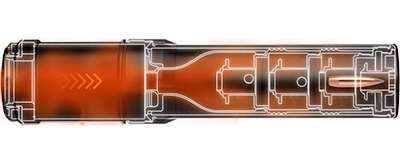
I have always found myself to personally be much more sensitive to blast than to recoil (who doesn’t love a firm tap on the shoulder?), so silencers exponentially improve the shooting experience for me, and, as a result, I have become an unapologetic evangelist for the virtues of suppressor use. However, according to the ATF’s “Firearms Commerce in the United States, Annual Statistical Update 2021,” (the most recent data currently available) a total of only 2,664,774 silencers currently reside in private hands. Compared to the more than 100,000,000 American gun owners out there, this unfortunately means that the vast majority of the people reading this page have still never availed themselves of the benefits and pleasures of suppressor ownership—so more outreach appears to be needed.
Given its target audience, Nosler’s new introductions nonetheless appear to be well-timed. There’s a persistent notion among some hunters that hearing protection is unnecessary while in the field because the shots take place outdoors and are thus not harmful. This, of course, is nonsense, but attitudes do thankfully seem to be starting to shift, and more and more sportsmen are wising up to the merits, both in terms of personal safety and in-field performance, of hunting suppressed. As of this writing, silencers are legal to possess in 42 of the 50 states, and Connecticut is the only one of these that permits suppressor ownership but restricts their use during hunting. I would still recommend the use of a quality set of ear pro anyway, whether you’re running a can or not, as hearing loss is both cumulative and permanent, so why risk it?
There are numerous benefits to suppressor use in general, all of which are also practically applicable to the hunter in the field. Lowering a shot’s volume not only diminishes its potential danger to your eardrums, it also greatly decreases the likelihood of spooking your target—and/or every other animal in the area, as well. Hunters of social varmints in particular will notice a huge improvement in this regard, although it also applies to groups of larger game.
A silencer substantially decreases recoil, making your rifle easier to shoot well and less prone to induce an accuracy-ruining flinch. And, where applicable, they can conceal a discharging firearm’s muzzle flash, helping to preserve a hunter’s nighttime vision. I have also repeatedly encountered the misconception that a silencer will neuter your rifle’s ballistics somehow—misinformation that seems to be perpetuated most often by the movie and video game industries. In actuality, my personal testing over the years has confirmed that, if anything, a suppressor will typically have a mildly propulsive effect, causing a very small (but observable) bump in muzzle velocities and energies.
Compared to the hoi polloi of the suppressor field (which is 99 percent populated by nearly identical cylinders with some slight exterior embellishments added for the sake of branding), Nosler’s new cans have a distinctive appearance. This is primarily due to their enlarged blast chambers and the prominent locknuts that secure the rear and forward portions of their tubes together. The SR-22Ti received for testing measured 7½" long, with the SR-30AlTi standing just a bit taller at 715⁄16". Each measured 1.64" in diameter rear of the locknut and 1.50" ahead of it. Both of the new silencers employ a five-baffle stack secured to the interior of the forward section of their tubes.

The SR-line suppressors are modular, just not in the sense that we usually associate with silencers—that of the user being able to configure the accessory to more than one possible length. Rather, the Nosler suppressors are modular in that all three of their main components (the locknut, rear tube and forward tube) are manufactured and assembled individually, which was a clever decision on the company’s part. For ATF’s purposes, the rear section of the unit is the serialized part, so—in the unlikely occurrence that either the baffle stack or front segment of the can are damaged and need to be replaced—this repair can be done by Nosler without the government’s involvement, as long as the rear tube is unharmed. This feature shows some real foresight on the part of the company’s engineers.
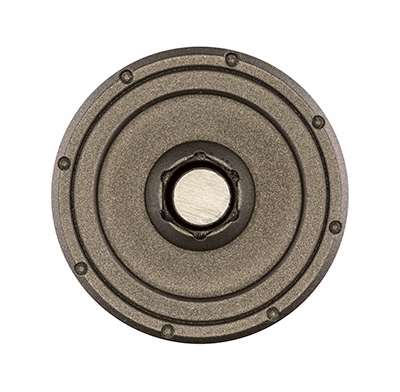
Nosler’s two .22-cal. offerings both have a maximum cartridge rating of .22-250 Rem., while its larger suppressors can handle any of the .30-cal. magnums on the market with a 0.534"-diameter case head, up to and including 30 Nosler, .300 RUM and .300 Wby. Mag. The line’s all-titanium Ti models are, indeed, 100 percent titanium from bow to stern, the only exception being the steel thread adapter located in the mount. In its AlTi models, the baffles are machined from titanium, which makes sense as it’s the baffles that are subjected to the greatest blast of ignition gases, but the rest of the cans are made of 7075 aluminum.
There are advantages to both approaches: As light as titanium is, aluminum is even lighter—despite being longer, my evaluation SR-30AlTi tipped the scales at a scant 9.3 ozs., or 2.5 ozs. lighter than the 11.8-oz. SR-22Ti. I’m not ready to outright declare that this is the lightest .30-cal. silencer on the market, but if a lighter one does exist, I’m not aware of it.
But, on the other hand, Nosler’s all-titanium silencers are more resistant to heating and are full-auto-rated—which the hybrids are not. Time will tell how well the AlTi suppressors hold up to long-term use, but after 80 rounds of .300 Win. Mag. were fired through it for the purposes of this story, my evaluation SR-30AlTi seemed no worse for wear, so I have no qualms about its longevity at this point.
In order to quantify just how effective my two test samples of Nosler’s new line were at mitigating the report from their respective host rifles, I first used a Larson Davis LxT1 sound meter to measure the average volume in decibels (dBs) of five shots through the unsuppressed guns at a point 6" from my ear. I then attached the cans—the SR-22Ti directly to the AR’s muzzle and the SR-30AlTi to the 7/8x28 TPI threads on the exterior of Nosler’s titanium muzzle brake—and repeated the process, waiting three minutes between each shot to allow a bit of cooling to occur.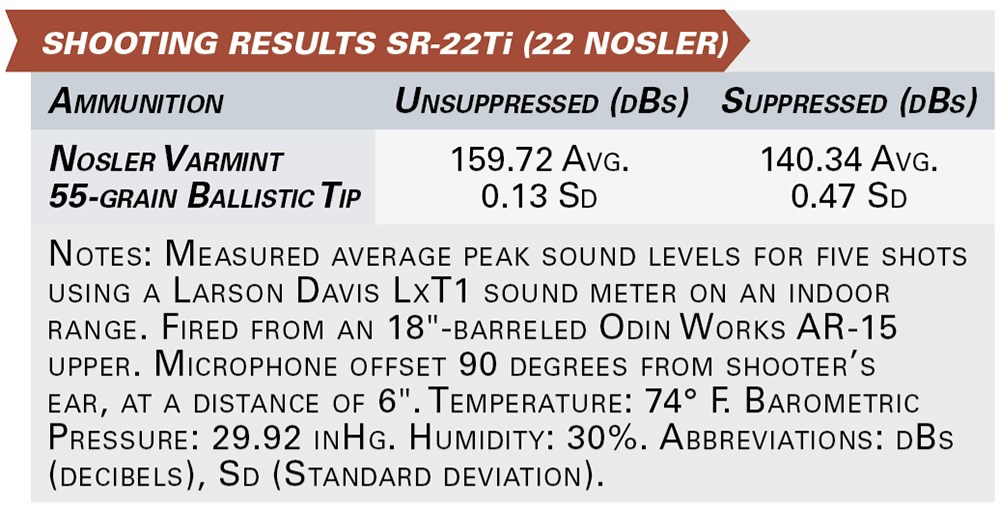
Both models revealed themselves to be excellent performers, with the .30-cal. in particular exceeding my expectations, given what a highly energetic cartridge Winchester’s magnum is. The SR-22Ti lessened the volume of Nosler’s 55-grain Ballistic Tips through the 22 Nosler-chambered AR-15 from 159.72 dBs unsuppressed to 140.34 dBs at the ear, for a reduction of 19.38 dBs—a pretty successful result for use with a semi-automatic rifle.
Even more impressively, Federal’s 165-grain Trophy Bonded Tips measured 167.80 dBs through the braked-but-unsuppressed .300 Win. Mag. Model 21 and 136.86 dBs when the SR-30AlTi was affixed. This incredible 30.94-dB abatement was no doubt assisted by the closed system of the bolt-action and the use of the muzzle brake during testing—which not only raised the unsuppressed baseline numbers but has also been found to increase the effectiveness of a suppressor in and of itself—but the result was impressive nonetheless.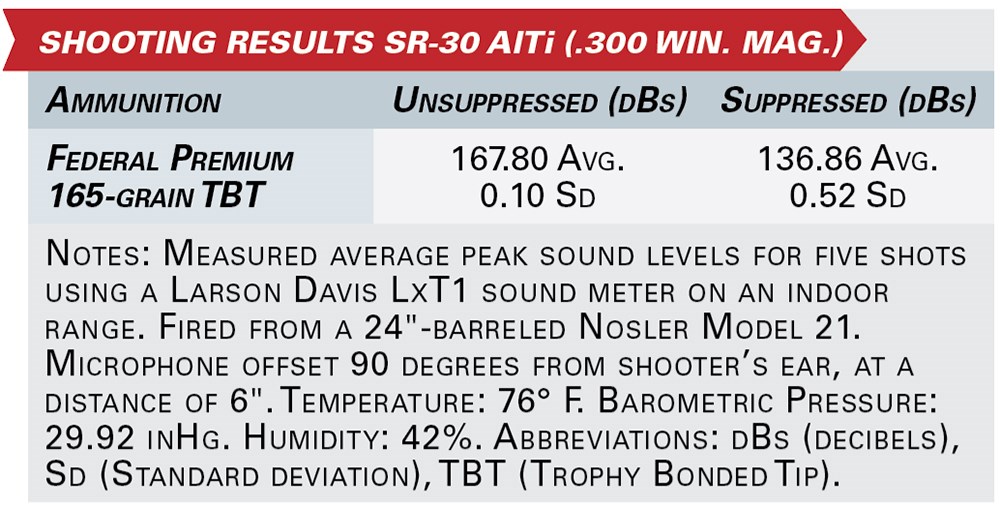
Point-of-impact shift was observed to be minimal through both rifle/suppressor combinations. At 100 yards, all 10 of the 22 Nosler shots landed close enough together to constitute the same group, while the Model 21’s impacts shifted only about 1.5" down and just a smidgen to the left at the same distance when the silencer was applied. It doesn’t take much effort to heat up any suppressor to sweltering levels, but it did seem like the SR-30AlTi got there more quickly than others I’ve evaluated. This won’t be an issue for a big-game hunter in the field or on the mountain, but it might be a consideration for extended range use or high-volume prairie dog or gopher hunting.
A silencer’s effect on recoil can be substantial, and I certainly found that to be the case while using both SR-series models. The .22-cal. unit cut the 22 Nosler’s already-docile recoil down to next to nothing, and the .30-cal. made the Model 21 entirely pleasant to shoot from the bench—despite its 7-lb. weight and authoritative chambering. As an aside, my testing rig for the hybrid can was a pretty sweet setup—a .300 Win. Mag. Model 21, adorned with the SR-30AlTi and a medium-power scope would make for an impressively lightweight and formidable big-game and western hunting rifle. If Nosler offered it in a left-hand action, I would probably need to start saving.
Given the inherent $200 surcharge built into every suppressor purchase, thanks to the government’s wrong-headed efforts to tax them into oblivion, manufacturers are wise to keep the prices of their products as reasonable as is possible—and Nosler appears to have taken this to heart. The SR-22Ti and SR-30Ti retail for $899 and $949, respectively, and if you’ve spent much time pricing the market’s all-titanium models, then you’re already aware of just how relatively sensible these figures are. And the hybrids are even more wallet-friendly: Nosler has set the MSRP of the SR-22AlTi at $649 and the SR-30AlTi at $699.
In my experience, some silencer manufacturers prioritize sound mitigation at the expense of toteability, and others can fixate on weight savings so narrowly that their products end up lacking the internal volume needed to work very well at all. Nosler’s entire catalog stands as testament to the fact that there is value to a sportsman’s rifle and ammunition being designed by hunters for hunters, and the SR line is proof that the same goes for suppressors as well.
In its new models, the company has reached a successful balance between both extremes—they are capacious enough to be highly effective, yet sized right to be practical aboard a gun that will be taken afield for days and miles on end. Given the performance that I witnessed and its extremely airy weight, that SR-30AlTi, in particular, is an absolute coup at its price point. And, of course, while this is not Nosler’s particular point of emphasis, both of the cans I tested would also serve the user equally well in martial applications aboard a home-defense carbine.
With ATF’s newly implemented electronic Form 4s expected to slash wait times to a virtual tithe of what they just recently have been, there is no time like the present to take the suppressor plunge, and Nosler’s new cans are very worthy candidates for your consideration. Joining its exemplary ammunition and rifles, the SR family leaves the company just an optic line shy of being the hunter’s one-stop shop. And given how ambitious and industrious the Nosler family has proven itself to be in the past, I wouldn’t put it past them.